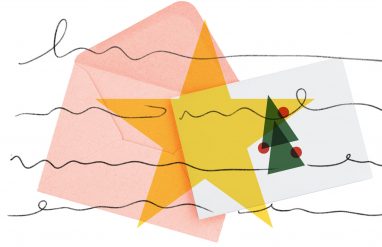Whenever you need to research something for school, fact-check something for work, or even just need to catch up on the news, you’ll find yourself consulting a lot of different books, newspapers, maps, interviews, and many other sources of information. But how do you know if the sources you’re reading, watching, or listening to are accurate? How can you avoid sources that are wrong or, worse yet, actually trying to trick you?
Given the fact you found this site, you already have a great head start. However, even the best sources should always be scrutinized, and there are several questions you can ask when evaluating a particular source or reference. Let’s learn what these questions are so you’ll be able to find the best sources whenever you need them.
ℹ️ What is a credible source?
In general, a source is typically considered a credible source if it provides relevant information written by a trustworthy, respected expert in the field that is free of bias and is supported by strong evidence.
What are credible sources?
To begin, it is important to explain what we mean when we say that a source or reference is credible. In general, a source is credible if it provides relevant information that is written by a trustworthy, respected expert that is free of bias and supported by strong evidence. In addition to Dictionary.com and Thesaurus.com, other examples of sources that typically meet these criteria include:
- Peer-reviewed journals, research papers, and academic databases
- Credible newspapers and media organizations
- Reference materials that focus on verified facts, such as almanacs, atlases, dictionaries, and encyclopedias
What are not credible sources?
In general, when researching a subject, you want to avoid any source that has biased, inaccurate, and/or unsourced information. Some examples of sources you should generally avoid include:
- References that use content submitted by anonymous users, such as Wikipedia or fan wikis
- Blogs and social media posts
- Research articles that do not have any sources or citations
- Comedy organizations that produce mock news or satirical news, such as The Onion
- Government organizations that have a history of publishing propaganda
How do you know if a source is credible?
So, how do we know if a source is credible and safe to use? The best way to evaluate a source is to ask some important questions. Let’s briefly look at the questions you need to answer before you use a source.
Who wrote it?
For both our dictionary and thesaurus, we have a highly experienced group of lexicographers and editors who research and verify all of the information you read. Other reference materials, such as encyclopedias, also rely on teams of skilled researchers and fact-checkers.
When expanding your research outside of reference materials, though, you will need to consider the author and check their credentials. You should confirm that they are a respected expert in their field and are not known to have a bias. A source that has an unknown or anonymous author is most likely not going to be credible.
If you are writing about a specific historical person, it is usually best for your research to find materials written or made directly by them, such as letters, books, interviews, speeches, or photographs.
When was it written?
We take every effort to ensure all of our information is up to date and are constantly updating definitions and articles so that they are as accurate as possible.
Unless you are researching a well-known historical event, you want to ensure that your source was written as recently as possible. A credible source will note the date it was published. Always make sure your source’s information is not outdated and hasn’t been made obsolete by newer discoveries and research.
Why was it written?
Our goal is to provide you with the most accurate and useful dictionary and thesaurus you will find anywhere. Other sources, though, may have very different intentions.
When using a source, you’ll want to determine its purpose or why it was written. Most research papers, scientific journals, and journalistic articles are attempting to report facts or add to the collective body of knowledge. Unless it is relevant to your research, you should generally avoid sources that are stating opinions, trying to persuade you to buy something, or working for an organization that has a known bias or agenda.
Where are their sources?
As mentioned previously, we have a skilled team of lexicographers, researchers, and editors who ensure only the most trusted sources and resources are used to provide you with information you can rely on.
A credible source will provide sources and citations that reveal where they themselves got their information from, either directly in the text or in footnotes, a bibliography, or a works cited section. Even if these are present, you should check those sources, too, and ask all of the same questions you asked about your initial source.
Learn how to distinguish between primary and secondary sources—a key part of the research process.
This process should make you aware that you should not rely on a single source if possible. Fact-checking and cross referencing are powerful tools in your arsenal you can use to confirm a source is credible. Use as many sources as you can and compare them to one another to ensure the information you are using is as accurate as possible.
Can you trust the author?
Since our beginnings in 1995, we have created the world’s leading dictionary and the web’s premier thesaurus and pride ourselves on providing you with reliable information.
For any source, you’ll want to verify if the author is trustworthy. Check to make sure they are a respected expert in their field and that they are writing for a reputable outlet or organization. Ensure that neither the author nor the publication they are writing for is known for a particular bias. If the author is or works for a government agency, look to see if they have a history of distributing propaganda or misinformation. Clearly biased authors and organizations can never be trusted as credible sources.
Government organizations, educational institutions, and international nonprofit organizations are usually trustworthy sources. However, even these sources should be checked to ensure they don’t have a bias or a history of distributing propaganda.
Signs that a source is not credible
Now that you have a good idea of how to identify a credible source, it is important to watch out for clues that a source is not credible. In general, resources that have no citations or that poorly present their own sources are best avoided. Likewise, you should be wary of sources that offer clearly inaccurate information and/or were written by authors that are untrustworthy or are known to have a bias.
Any source that has one or more of the following would not be considered a credible source:
- No sources or citations
- Anonymous or unknown authors
- Bias (any source that has an established, well-known bias should not be considered a credible source)
- Misinformation and disinformation (a source that intentionally spreads wrong information or makes no attempts to verify the information it provides is not credible)
- Research funded by a commercial business or research that is intended for advertising or marketing purposes
- Government propaganda, fake news, and information from obscure organizations pretending to be news outlets












